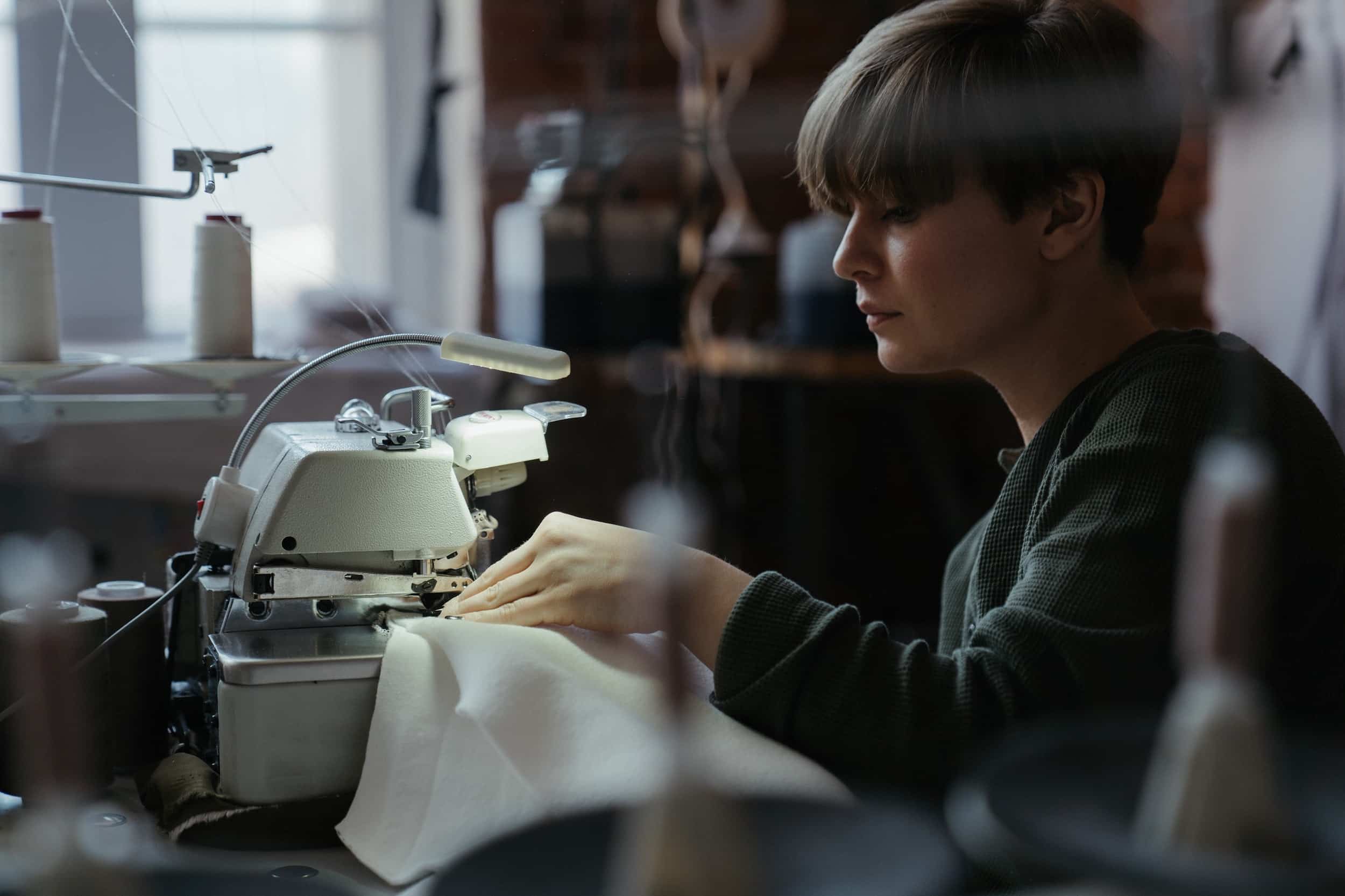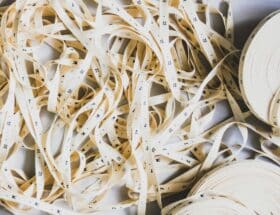Being a fashion designer seems like it’s an all-glamorous job, but the reality of the matter is that it’s a super difficult and high-stress career choice. Most fashion designers are seasonal workers and rely on a lot of pre-planning to make sure that they are prepared for various seasons and events.
Even though a lot of fashion designers can perform the various tasks of the fashion design processes themselves, they rely on a good team to be able to bring all their amazing ideas to life.
It’s really important that they can communicate their vision to their team and train them effectively so that they can create magic to be worn by their clients.
There are many types of fashion designers. They serve different purposes and require different skills. Gone are the days where designers would need to spend days on end hand sewing a garment with a simple needle and thread. With the rise of technology, sewing machines and other equipment have helped to make things much easier in the world of fashion.
Production has become much quicker and much neater as the machines help to precisely stitch the garments in record time. One of the most popular brands of sewing machines is Brother.
It has been in business for many years and has various options suited for handling the various needs of their clients. In this article, we will take a look at the various types of fashion designers and explore the various machines that they use to make their production life easier.
We will also discuss a few key things you need to consider when choosing to buy a sewing machine for yourself or your business.
Types of Fashion Designers
Fashion designers are professionals who are tasked with creating new and trending styles for people to wear. They create prototypes which are then used to manufacture the final products. There are various types of fashion designers that serve various purposes while they create different types of attire. The main type of fashion designer is an apparel or clothing designer. Since there are very many types of clothes that people can wear, these designers are further classified into categories depending on the type of clothing they make and the levels of production they focus on.
Haute-couture fashion designers
Haute-couture fashion designers focus on creating custom-made, high quality and delicate garment pieces for their wealthier customers. Production is usually minimal as they focus on individual customers and usually have a smaller customer base.
Their clients are usually wealthy, being able to afford more expensive items. The fabric used by these designers is usually of high quality and very delicate, needing to be handled with extra special care. Production of these garments is also quite low. Because they usually deal with individual customers, they focus on custom made designs that are specialized for their various clients. They therefore rarely ever mass produce and they focus on reduced wastage of fabric.
Ready-to-wear fashion designers
Ready-to-wear fashion designers are also called prêt-a-porter designers. They focus on creating clothing for groups of people. Because they aren’t highly customizable the garments need to be able to fit a wide range of body types and figures. They classify their clients into various body sizes and use average measurements to ensure that their garments fit all those in the particular body size. The designs are also less complicated and require less time to produce. Most fashion retailers work as ready-to-wear designers. The production of ready-to-wear apparel can often be mass-market as the garments have limited customizable options.
They are therefore produced in bulk for large groups of people classified into various body sizes and groups. These clothes are also usually more affordable and less durable, requiring the clients to change them and buy new ones from time to time.
Footwear designers
Footwear designers create new types of shoes for their customers. These could include sneakers, high heels or flats. They can further be classified into formal wear, athleisure or casual depending on the types of shoes they produce. They sometimes work together with apparel designers to create complimentary shoes for the various outfits.
Accessory or jewelry designers
Accessory or jewelry designers create jewelry like earrings, neck pieces, bracelets, etc. that are used to compliment the apparel that the client is wearing. They usually require little to no sewing depending on the type of jewelry. They focus more on the construction (smelting, carving) of these items using special and beautiful materials.
Eco-fashion or sustainable designers
Eco-fashion or sustainable designers are very environmentally conscious and aware. The fashion industry is one of the biggest pollutants in the world. These designers therefore strive to use sustainable materials and industrial manufacturing processes that reduce the amount of fabric waste and pollution in the environment. Sustainable fashion is becoming more and more popular, as professionals are realizing the impact that eco-conscious clothes have on the environment. Most of the materials used are usually biodegradable. Their clients are usually socially conscious and environmentally aware.
Types of sewing machines
There are very many different types of sewing machines that are tailored to meet specific needs of their clients. It’s important to be sure of the various options available when purchasing your own machines so that you can make a well-informed decision that will serve all your needs. If you’re a new fashion designer that is learning how to sew or maybe you’re not even a designer but would like to have a sewing machine at home for your personal projects and needs, then it would be advisable to start off with a domestic sewing machine.
Domestic sewing machine
Domestic sewing machine is usually portable and typically made for domestic and personal home use. These types of machines usually come with multiple fancy in-built stitches that help the user to create beautiful stitches that are versatile to their various needs. Some of these stitches could include a simple straight stitch that is the most commonly used type of machine stitch or even a zigzag stitch that is used for decorative purposes or to neaten the seams of garments and avoid fabric fraying.
industrial sewing machine
If you are a more experienced designer then you might consider getting an industrial sewing machine for your business. An industrial sewing machine is mostly used by businesses for long term, more professional work. There is a strong focus on durability of its various parts and motors when constructing it. They mostly have only one or two in-built stitches as opposed to the many that you’ll find on the domestic machine. They also require regular maintenance where their parts are cleaned and oiled regularly to prevent its parts from wearing out.
Manual sewing machines
Domestic machines can further be classified into various groups. Manual sewing machines are the most basic types of machines and were used back in the day when access to electricity wasn’t always assured. They don’t require electrical power to function and instead use a hand wheel to create the stitches. Because of this, they are more time consuming and tiring to use.
Electronic machines
With the advancement of technology and more access to power, electronic machines were built. They rely on electricity to run and are usually very fast in creating the required stitches. These usually give you a number of various stitches that you can choose from.
Computerized sewing machines
Computerized sewing machines are advanced electronic machines. They are also the most expensive type of domestic machines. They usually have WIFI and USB capabilities and a small screen on them. This allows for their users to download designs and instructions straight to their machines. They usually have hundreds of in-built stitches and are able to make buttonholes. They are quite complicated to use for beginners but are a great option for more experienced sewers.
Overlock sewing machines or sergers
Overlock sewing machines or sergers are a type of industrial machine. They are usually used at the end of the sewing project to neaten up the inside of the seams by closing them and finishing up the edges. They are very fast, use a lot of thread and are able to create very clean finishes, making garments look super professional.
Embroidery machines
Embroidery machines focus on creating decorative and beautiful patterns on a garment. They are used by artistic designers to create beautiful art on clothing. Although embroidery can be done by hand, machines are much faster especially when mass-producing the garments.
Quilting sewing machines
Quilting sewing machines are used by designers that want to make large quilts. They can sew through many layers of thick fabric due to their longer arms that allow bigger volumes of fabric to pass through the machine.
Choosing the Right Sewing Machine
Not all designers are required to know how to sew. Their main priority comes in designing the prototype of the garment. However, it’s really important that they have an idea of how to do some basic sewing. It’s also important that they hire the right tailors and garment constructors that fully understand the various sewing techniques and know how to handle various sewing machines.
When choosing a sewing machine for your personal or business use, it’s very important that fashion designers evaluate their needs and what they are going to use the machine for. With the continuous advancements in technology, companies like Brother now offer a wide range of machines tailored to your specific needs and budget. You can never go wrong with a Brother sewing machine; just make sure you get help in choosing the most convenient machine for your needs.



